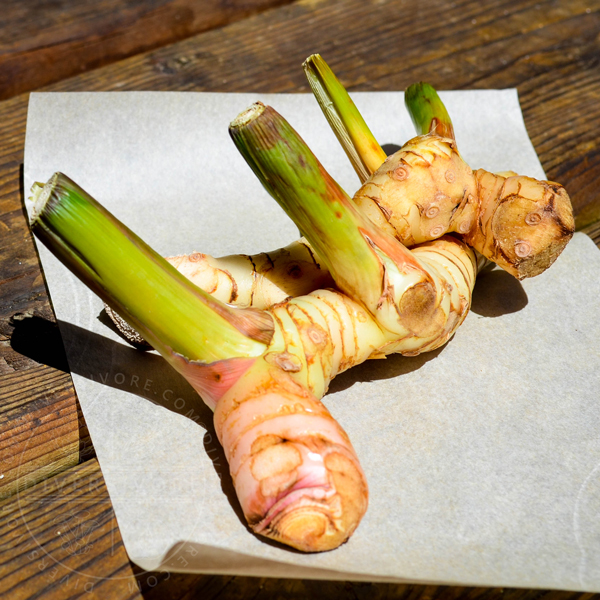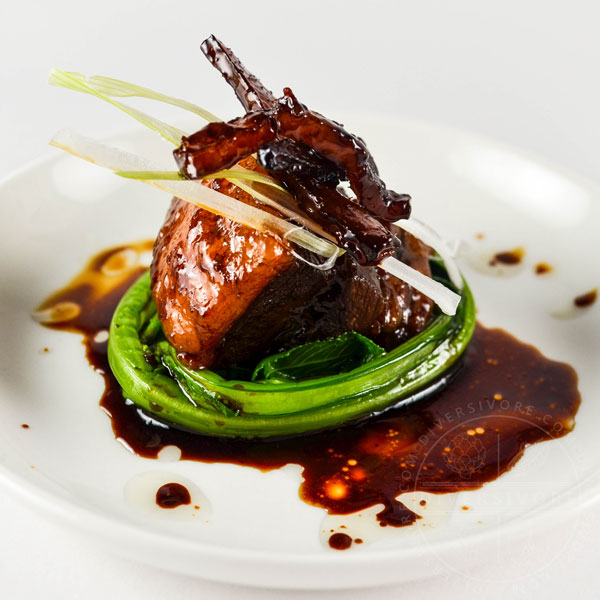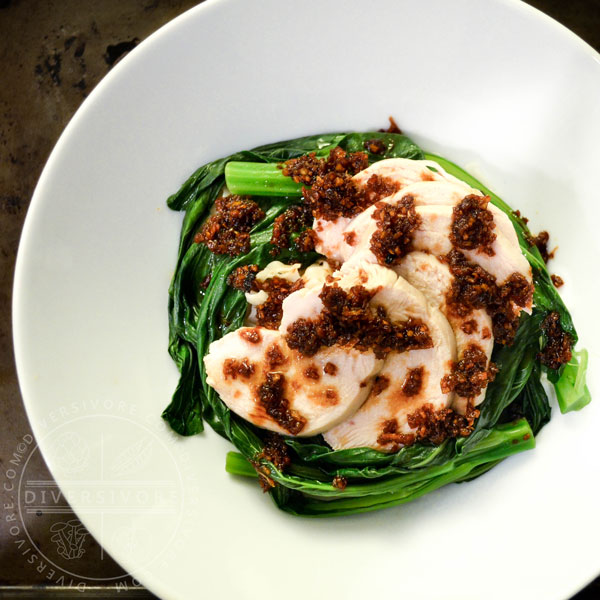How to Find, Choose, & Use
Galangal
Alpinia galanga

Share this Guide
The Basics
What Is It?
The spicy and pungent tasting root-like rhizome from a member of the ginger family (Zingiberaceae), native to Southeast Asia. There are several other related plants with the name galangal, but this article deals primarily with the most common type - Greater Galangal.
Seasonality
Available YEAR-ROUND
Flavour Profile
Pungent/medicinal; reminiscent of pine and black pepper.
Other Names
English: Thai Galangal, Blue Ginger, Thai Ginger, Galingale,
Thai - ข่า - Kha
Indonesian - Lengkuas
Galangal FAQs
Is Galangal the Same as Ginger?
No. While ginger and galangal are related and are used in similar ways, they have extremely different taste profiles.
Is Galangal the Same As Turmeric?
No. Once again, the two species are related and used in somewhat similar fashions, but they have very different flavours.
Can You Eat Galangal?
Yes. Galangal is used as a flavouring in a variety of foods (notably Thai spice pastes), and is perfectly edible. That being said, the root itself is rather dense and woody (even more so than ginger). As such, you don't necessarily 'eat' it unless it's been reduced to a paste or very small pieces. As with ginger, large, tough pieces used to flavour a dish are discarded or left behind when eating.
How-To
Find
Thai and well-stocked Asian grocery stores (especially those with a Southeast Asian focus) are your best bet. Online specialty retailers may be able to ship it to you, but be prepared to buy a larger quantity.
Choose
Firm roots with bright, relatively unblemished skin. Slightly papery rings on the skin are normal, as are small round 'eyes.' Like ginger, galangal is a rhizome and is likely to have cut ends. These may be dried out a little, but shouldn't be soft or mouldy.
Prep
Difficulty: Low - Prepared much the same way as ginger. The root may be peeled, though this isn't always necessary. Note that galangal is considerably tougher than ginger, so use a sharp knife.
Use
As with ginger, galangal is generally cooked in dishes, though it's not always eaten itself. Slices/pieces will lend distinctive flavour to dishes, but are too woody to eat. It can also be pounded into a paste as part of a curry/spice paste, in which case it is eaten.
Store
Short Term: Wrap in paper towel and refrigerate in an unsealed bag
Long Term: Slice and freeze
Culinary Info
Flavour Profile
Pungent/Spiced - Galangal has a distinct and unique flavour, somewhat like a cross between pine needles and black pepper, with a slight sweetness.
Substitutions
Substituting for galangal is difficult. Frozen galangal is the best choice if fresh is unavailable. Dried galangal (which is shelf-stable) is the next best option.
Ginger serves a similar purpose in recipes, but does NOT have the same flavour profile (see Substitution & Flavour note below for more details).Cuisines
Most prominent in Thai cooking, galangal is also used (often to a lesser degree) in other parts of Southeast Asia.
Flavour Pairings
Best with typically Southeast Asian ingredients like lime, fish sauce, chilies, coconut, etc. Pairs well with a variety of meats and vegetables, though it can be a bit overwhelming if not used judiciously.
Varieties
Greater galangal does not have any prominent culinary varieties, however it is worth differentiating from Lesser Galangal, Fingerroot, and Sand Ginger which are all also called galangal (see Important Varieties note below).
More Info
Nutrition
Note: Galangal is not generally used in large enough quantities to contribute substantially to the nutritional profile of a dish.Nutrition FactsGreater Galangal - 100 gAmount Per ServingCalories 71 Calories from Fat 9% Daily Value*Fat 1g2%Sodium 12mg1%Carbohydrates 15g5%Fiber 2g8%Protein 1g2%Vitamin C 7.4mg9%Iron 0.4mg2%* Percent Daily Values are based on a 2000 calorie diet.Top-To-Tail
The rhizome is the only commonly available part in most markets, but the leaves can be used to add a similar (but milder) flavour to curries and sauces. The small red fruit has a flavour similar to cardamom, and is sometimes found at Chinese herbalists.
GMO Status
There is no GM or gene-edited galangal in the human food supply.
Health & Science
- Dried galangal was once a very important medicinal herb in much of Europe.
- Galangal contains the flavonol compound galangin, which has demonstrated a variety of beneficial properties.Organic vs. Conventional
USDA organic galangal is grown in Hawaii, but is not commonly available. Information about pesticide use in conventional galangal is limited, but the plant is known for being naturally anti-microbial and insecticidal, and most likely does not require much treatment.
Share this Guide



